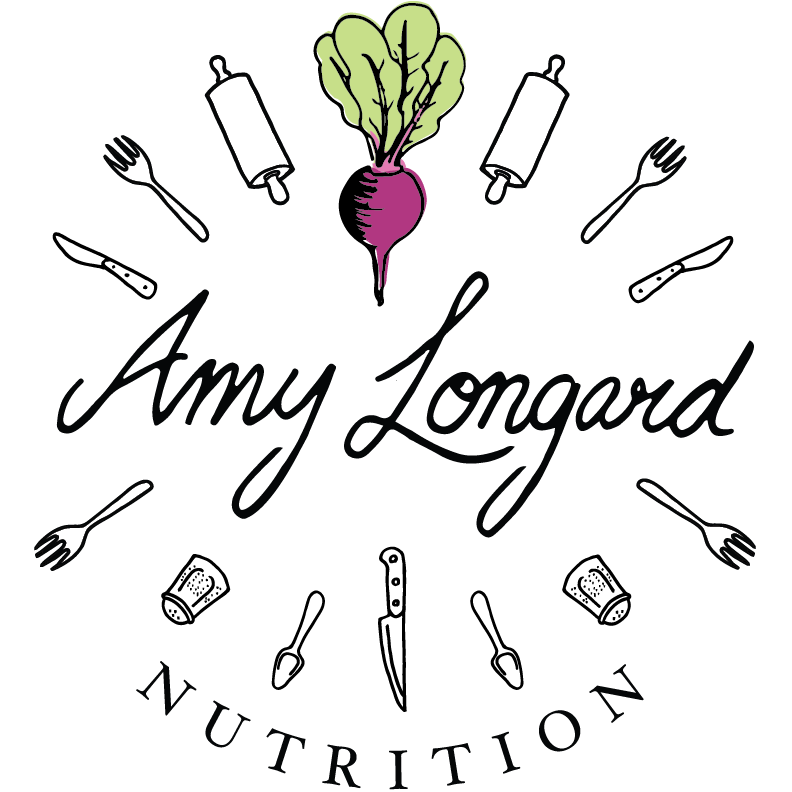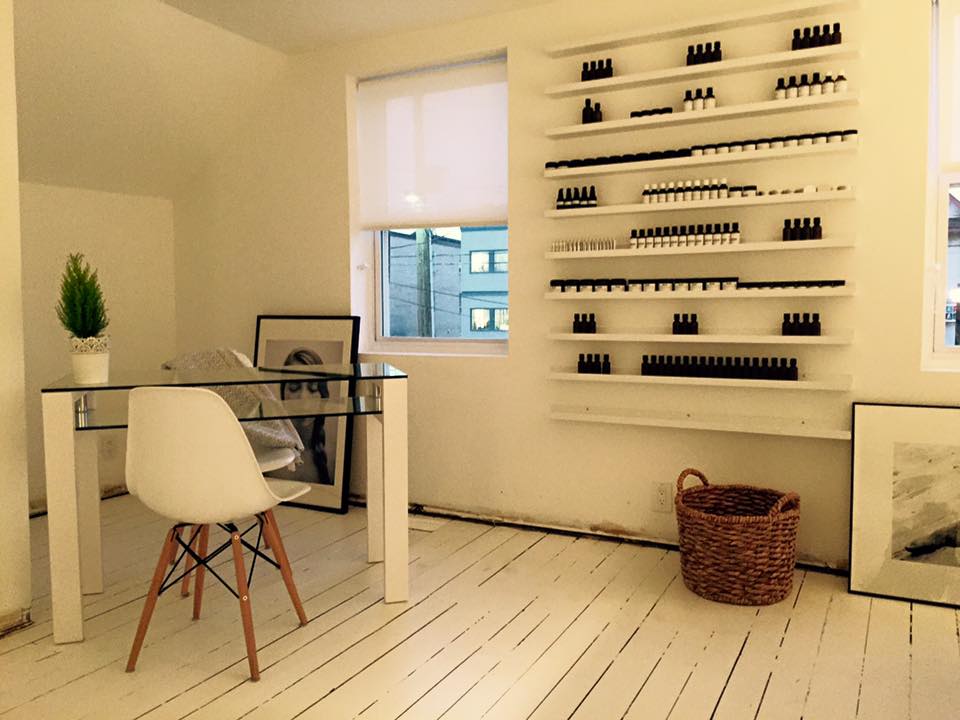The Essentials For Winter Skincare : Q & A with Magdalena Tomczak of Woman Divine
Although we haven't really experienced a true Ottawa winter yet, we all know it's coming. In anticipation of the icy cold days (and months!) ahead, Magdalena Tomczak, owner of Woman Divine, one of my favourite local skincare studios, answered some of my questions about oils and how they can help protect our skin from the elements, particularly harsh Canadian winters.
When I first met Magdalena this summer, I was thoroughly impressed by her holistic approach. I also admired her depth of knowledge and passion for skincare. She has created her own line of organic face balms, lip balms, and skin oils, and offers a range of skincare services at her beautiful studio on Churchill Avenue. Spending time with her, in her studio, is such a treat. It's a mini-escape that will provide instant stress relief for you... and your skin!
Magdalena is so knowledgeable and, in my short time knowing her, I've learned so much. Naturally, I had to feature her on my blog. Below, she shares the basics of essential oils, which oils are best for which skin types, the protective properties of oils, how to store and source oils, and much much more.
Amy: I love that you make your own skincare products using essential oils. What drew you to essential oils in the first place?
Magdalena: You can say essential oils were with me since I was a little girl. My mom used them to treat simple ailments like colds and stomach aches. At the time she did not know that using essential oils for health benefits had a fancy name ‘aromatherapy’. To her they were just simple home remedies. I guess as a result my natural instinct was to reach to essential oils for healing.
Professionally, I first used essential oils twenty some years ago in my massage therapy practice. However, I actually did not study aromatherapy until I came to Canada from Poland in 1987. By the time I had transitioned to holistic skincare I understood their incredible healing properties for skin. These days, I’m making my own products and using essential oils every day in my treatment room.
Amy: I’m a newbie when it comes to essential oils. Can you break it down for me?
Magdalena: In skin care, and in aromatherapy in general, we use these basic kinds of oils: essential oils, vegetable oils, herbal oil infusions and butters.
Essential oils are produced by the process of steam distillation from various parts of the plants: flowers, leaves, barks, and resins. They offer a wide range of therapeutic properties: antimicrobial, antiviral, antifungal, stimulants, cell regenerators, calming, balancing, astringent, expectorants, sedative, antispasmodic, anti-hematoma, improve the circulation… and the list goes on.
Interestingly enough, essential oils are not oily at all. We buy them in tiny bottles because they are very concentrated and we need only a few drops at a time. They are rarely used pure on the skin. Most of the time they would be too strong and possibly cause irritation. Therefore they need to be diluted in the vegetable oil also known in aromatherapy as a “base” or “carrier oil”. A few examples of essential oils used in skin care are: true lavender, ylang ylang, rose, jasmine, vetiver and geranium.
Vegetable oils are produced from nuts and seeds. We are interested only in oils produced with integrity: cold pressed, non-processed, non-deodorized and organic. Vegetable oils are carrier oils for essential oils but on their own they are amazing therapeutic substances with astounding benefits for holistic skin care. They are nutritionally dense and are a good source of oil-soluble vitamins (A, D, E, and K), fatty acids including essential fatty acids, sterols, phospholipids, tocopherols…
The majority of organic vegetable oils offer excellent protective and emollient properties for the skin, and greatly reduce trans-epidermal water loss. Therefore they improve skin hydration. Vegetable oils are needed by the skin to maintain its barrier function, health, tone, moisture, and elasticity. Examples of vegetable oils used in skin care are: argan, rosehip, jojoba, sunflower and olive oil.
Herbal oil infusions are simply vegetable oils infused with plant material. They are beautiful in marrying the therapeutic properties of vegetable oils and specific herbs. Commonly known herbal oil infusions are: calendula oil and arnica oil.
And then there are butters, which are produced from nuts and are solid at room temperature. These will provide deeper protection from the elements. They are wonderful emollients and soften the skin. A great example of butter is widely used shea butter.
Amy: Many of us experience dry skin or break out when the seasons are changing. Do you have any favourite oils to use during the fall/winter to help protect skin from the elements?
Magdalena: Changing seasons reminds us of the ever-existing rhythms of nature. Rhythms which so profoundly affect our very own ebb and flow. We forget to pay attention but thankfully skin is a great storyteller. It gives us clues whenever we stray off the path or simply need a bit more loving care. Fall and winter definitely call for the use of oils. The combination of essential oils, vegetable/herbal oils and/or butters offers a perfect therapeutic partnership. I have many favourite oils but the application will always depend on an individual and their skin. The most important thing to do in treating your skin is to first understand your individual needs. We are all a little bit different.
These are some general guidelines for which oils to use:
Essential oils:
Dry skin – rosewood, lavender, carrot seed
Combo/sensitive skin – chamomile, ylang-ylang
Oily skin – rosemary, lavender
Vegetable oils:
Dry skin - argan, rosehip, sesame, shea butter
Combination skin – jojoba, sunflower, coconut, shea butter
Oily skin – grape seed, jojoba
If your skin is dry or sensitive you will benefit from adding oils to your daily beauty care. Look for products that contain shea butter for extra protection from the elements. Always apply your oils on slightly damp skin or use an organic rose hydrosol prior. Oils can be used as day or night moisturizers. Some people use them also as a cleanser. I often do.
How much to use? 10ml vegetable oil + 5 drops essential oil.
The above oil suggestions will be a good start. Play with it! You may discover that there is a skin care formulator sleeping quietly within you.
Amy: I know you are very diligent when sourcing your essential oils. How do you ensure that they are high quality?
Magdalena: Not all oils are created equal. We definitely have to be mindful when purchasing oils because there is a lot of very poor quality product on the market today. This goes for both essential and vegetable oils.
When we use oils for therapeutic purpose we want to be sure that the product we use actually offers therapeutic properties. Synthetic product is not only void of any healing, life enhancing molecules but it becomes a burden for our body, aging us quicker and presenting us with possible health risks. That is why purchasing pure, great quality oils is of utmost importance.
To ensure the quality of my products and treatments I purchase mostly from people I know, small companies run by people with passion and love for the planet and life in general. I discovered a couple of distilleries that I love during my travels to France. They are run by hard working families. You can feel the love when you visit. It’s amazing! I hope to travel more in the future to discover other producers like that.
Amy: Do you have any tips on how to store oils in order to keep them from degrading or to prolong their shelf life?
Magdalena: Yes, it is pretty simple. Oils do not like light or heat. Store them in dark glass bottles (never in plastic) and in a cool, dark place.
Amy: I love the Face Balm you developed. I’m guessing it would be the perfect thing for the colder months.
Magdalena: Definitely. It is a protective blend of vegetable and essential oils with a good dose of shea butter. It is all organic — just oils and butters — not even a bit of undesirable stuff. It has developed quite a following in the last couple of years. My dry skin clients in particular love it. It's a great product for cold Ottawa weather for sure.
Amy: What's your go-to essential oil?
Magdalena: Oh Amy, this is such a difficult question… I have so many!
Ok, if I had to pick one for skin care purposes it would be Everlasting (Helichrysum italicum) simply because it has absolutely amazing skin healing properties. I do not care for its aromatic profile but I know it does wonders so it is #1.
As far as my own pleasure goes, I am a bit of an aromatic snob lately and indulge in rose and jasmine. So beautiful and feminine and sensuous…pure love. But ask me in a couple of months and it may be something simple like Eucalyptus radiata. I go with the flow. I guess, I hang out with the one which is calling me at the moment.
Magdalena's studio, Woman Divine, is located at 363 Churchill Avenue (near Richmond Road) in Ottawa. You can follow her on Facebook, or visit her website for more information.




